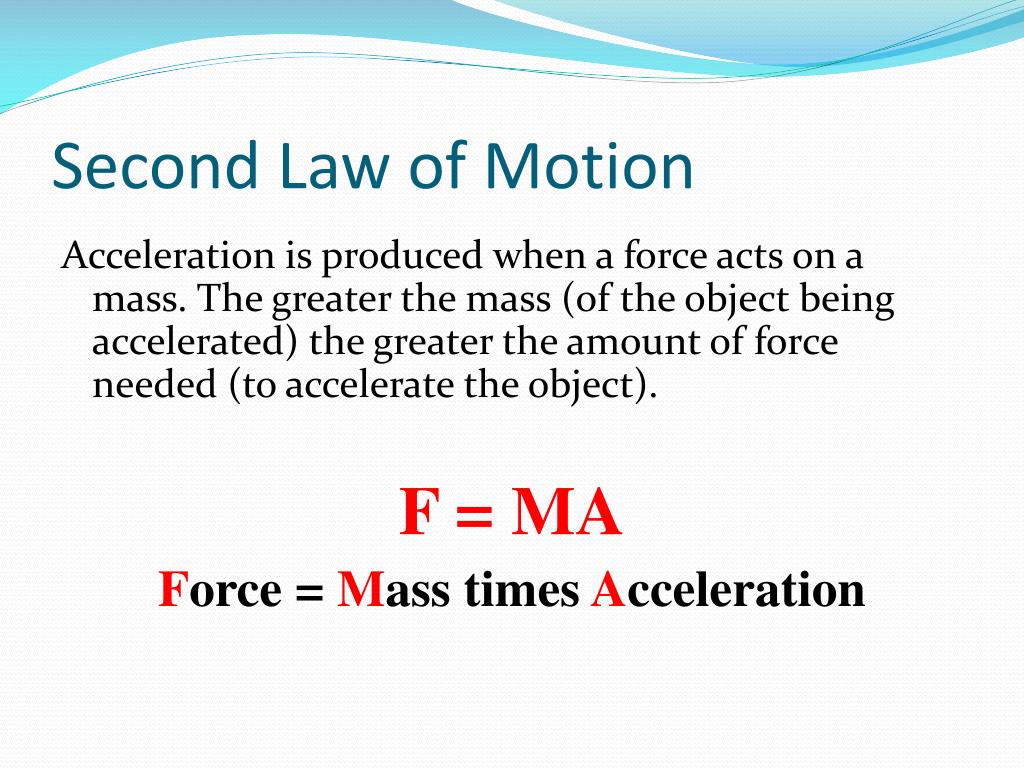

→ Friction: The force that resists the relative motion of solid surfaces, fluid layers and material elements that slide against each other is known as friction. → Impulse: The total effect of force on the motion of a body is called impulse. → Newton: The force which produces the acceleration of 1m/s 2in a mass of 1 kg, is equal to one Newton force. → Momentum: The product of mass and velocity of a body which is moving. → Inertia: Is the property of an object which resist to the change. → Force: Is an external agency which changes or tends to change the state of a body.
LAWS OF MOTION FREE
→ Free body diagram: A diagram for each body’ of the system depicting all the forces on the body by the remaining part of the system is called the free body diagram.

It is a vector quantity and is devoted by \(\vec\) = 0 → Force: It is a push or a pull, which either changes or tends to change the state of rest or of uniform motion of a body. The laws of motion are fundamental and make us understand everyday phenomenon. Newton demonstrated that force and motion are closely connected. The concept of force discussed in this chapter will be useful in different branches of Physics.

The first law states that 'Things want to keep on doing what they are already doing'. In this chapter, we will learn the basic laws of motion and discover the forces that cause motion. A brief video for children explaining Newton's laws of motion in an easy & fun way. For example: Why raindrops fall to the ground? Why does the Earth move around the Sun? However, there are some situations where the cause behind an action is not visible. – 322 B.C.) held the view that if a body is moving, something external is needed to keep it moving. Now, the important question arises: what makes an object move? Or what makes a ball roll along the ground to come to halt? We know from our everyday experience that we need to push or pull an object if we want to change its position. These forces are always applied to separate objects and never to the same one.We have learnt to describe the motion of an object in terms of its displacement, velocity and acceleration. The magnitude of these two forces is always equal, but their direction is always opposing. This means that all-natural forces behave in pairs. When a body applies a force on another body, Newton's third law of motion states that there is an equal and opposite reaction for every action.Īs a result, according to the third rule of motion, there is an equal and opposite reaction to every action. Now, a change in momentum can be expressed by would be Newton's second law of motion as: P 1 = mu and p 2 = mv are the initial and ultimate momentums of the item, respectively. It is uniformly accelerated to velocity, v, in time, t, by applying a constant force, F, over the entire duration, t. As a result, Newton's second law of motion can be stated as follows:Īssume a mass m is traveling in a straight line with an initial velocity of u. The applied force is proportional to the rate of change in the momentum of an object. If an external force is applied, the velocity will change as a result of the force. Use Newtons 2nd Law (a F/m) to find the acceleration, the force or the mass. If the velocity is zero, the item is said to be at rest. The important aspect to remember is that if there is no net force exerted on an item due to imbalanced forces, the object will retain its velocity. Newton’s 1st law states that a body at rest or uniform motion will continue to be at rest or uniform motion until and unless a net external force acts on it. Inertia is the ability of huge bodies to resist changes in their state of motion. Newton's first law of motion states that things cannot start, stop, or change direction on their own and that they require some external force to do so.

They were first articulated by English physicist and mathematician Isaac Newton. The laws of motion, which are the cornerstone of classical mechanics, are three statements that describe the relationships between the forces acting on a body and its motion.


 0 kommentar(er)
0 kommentar(er)
